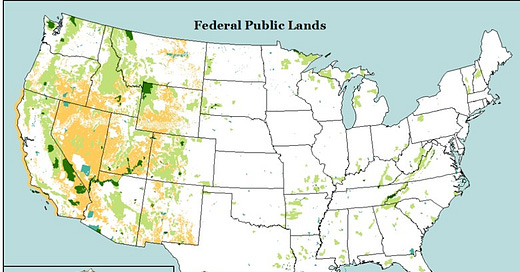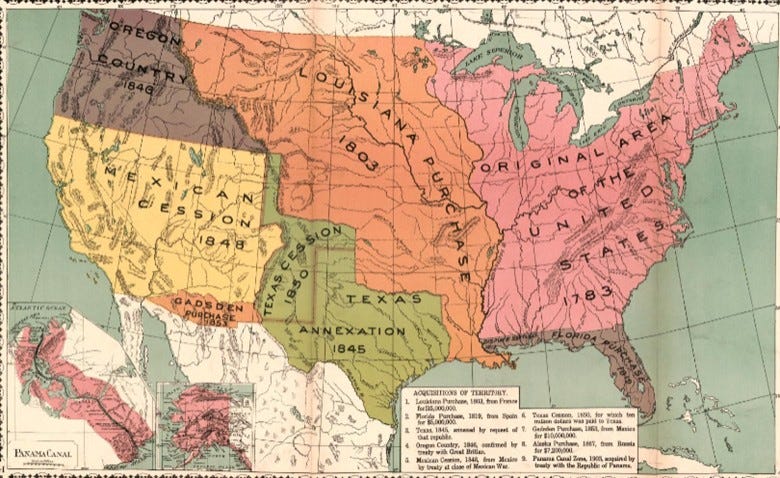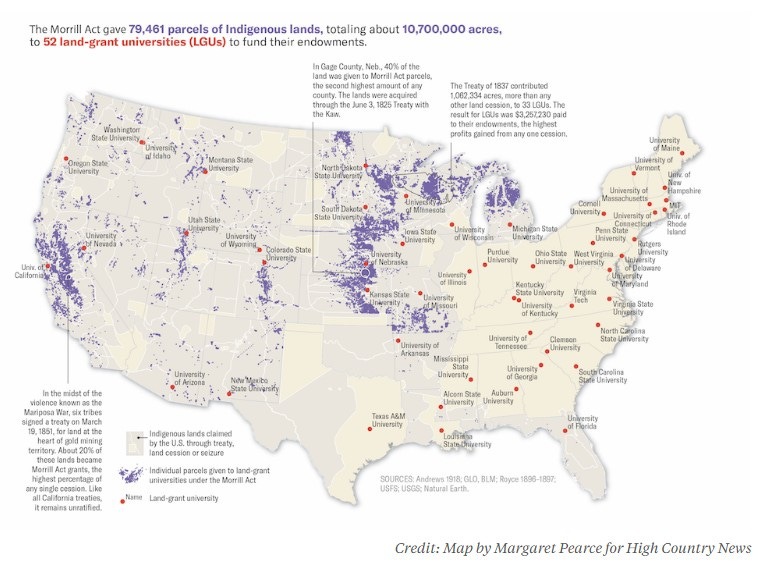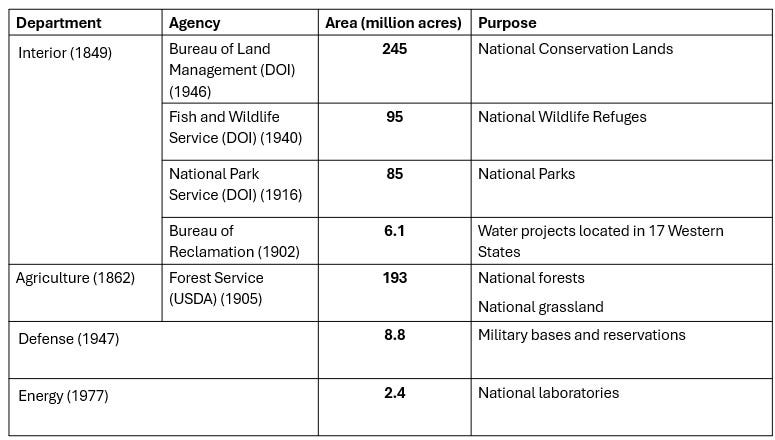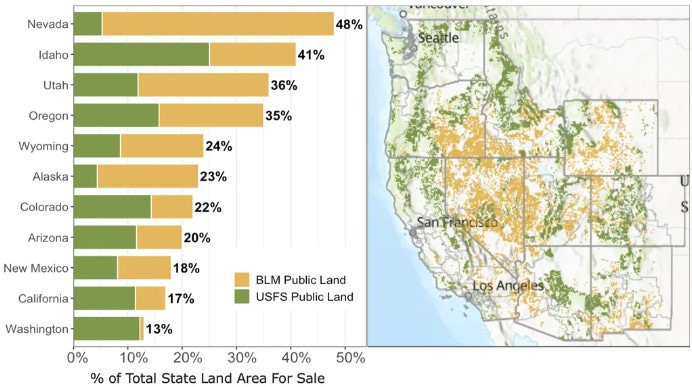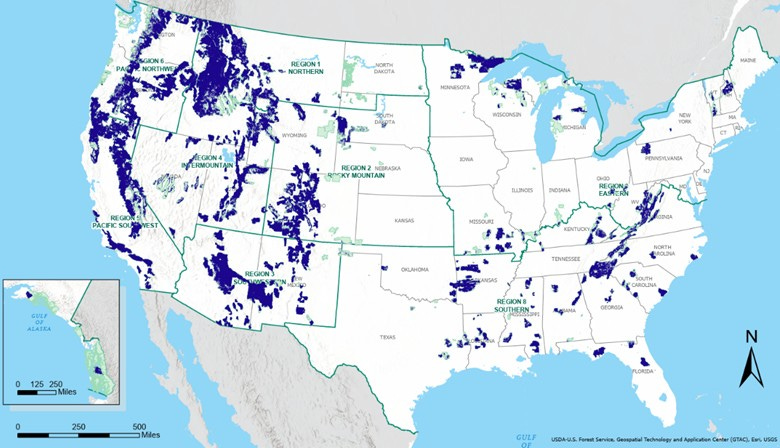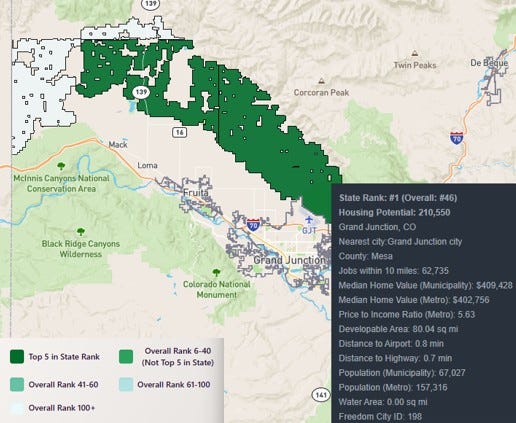A recent Department of Justice (DOJ) legal opinion concluded that “the Antiquities Act’s power to declare carries with it the power to revoke.” This interpretation opens the door to abolishing national monuments. White House spokesperson Harrison Fields affirmed that this view “enables us to meet the need to liberate our federal lands and waters to oil, gas, coal, geothermal, and mineral leasing.”
Public lands in the United States are contentious due to their geographic extent, diverse designations, and competing uses. These lands include national parks, forests, monuments, recreation areas, wildlife refuges, scenic rivers, wilderness areas, and historic battlefields. Approximately 640 million acres are managed by four primary agencies: the U.S. Bureau of Land Management (BLM), National Park Service (NPS), Fish and Wildlife Service (FWS) - all within the Department of the Interior - and the U.S. Forest Service (USFS) in the Department of Agriculture. Additional federal lands are overseen by agencies such as the Bureau of Indian Affairs, Bureau of Reclamation, National Oceanic and Atmospheric Administration (NOAA), Army Corps of Engineers, Department of Energy, and the Department of Defense.
Map of all U.S. public lands by Kara Clauser, Center for Biological Diversity. https://www.biologicaldiversity.org/programs/public_lands/protect_public_lands/map.html.
Management of these lands has been a central issue since U.S. territorial expansion, with most public lands located in the western states. In the 19th century, colonial settlement and the removal of Indigenous Peoples were dominant forces (see The geography of … ethnic and racial injustice in the United States, June 19, 2025). Several laws facilitated the transfer of public lands to private hands: the Homestead Act (1862) for agriculture, the Morrill Land-Grant Act (1862) for establishing agricultural colleges, the Desert Land Entry Act (1877) for irrigation and farming, and the Timber and Stone Act (1878) for logging and mining. Other laws, such as the General Mining Law (1872) and the Taylor Grazing Act (1934), prioritized private development and resource extraction on public lands.
Acquisitions of Territory (42). McConnell’s historical maps of the United States. Public Domain. https://www.loc.gov/resource/g3701sm.gct00482/?sp=40&r=-0.14,-0.01,1.324,0.796,0.
Much of this land was taken from Native American tribes through wars, treaties, and forced relocations. Land-grant universities exemplify this legacy. While these institutions were designed to support local development through education and land management, a 2020 investigation by High Country News titled Land-Grab Universities revealed that the U.S. government expropriated 11 million acres of Indigenous land to endow 52 land-grant universities. In recognition of this, many universities have adopted “land acknowledgements,” a tradition rooted in Indigenous practice, to honor the original stewards of the land. These acknowledgements gained momentum in the U.S. in 2016 following the Dakota Access Pipeline protests led by the Standing Rock Sioux Tribe, which drew global attention to threats facing tribal lands and cultural resources.
The federal-Tribal relationship is central to the stewardship of public lands. The U.S. government’s recognition of tribal sovereignty includes respecting tribes’ rights to their geography of land, water, and cultural preservation. The National Park Service is responsible for protecting natural and cultural resources, many of which are deeply connected to tribal heritage. However, funding cuts and staff reductions under the Trump administration threaten stewardship agreements and preservation programs, jeopardizing the physical and intellectual integrity of Native heritage sites.
Indigenous lands and land-grant universities. https://www.hcn.org/issues/52-4/indigenous-affairs-education-land-grab-universities/.
Public lands serve multiple purposes. The BLM and USFS are tasked with managing for “multiple use and sustained yield,” while the NPS and FWS prioritize conservation, protection, and public enjoyment. Designations such as wilderness areas (11.1 million acres established under the Wilderness Act of 1964), recreation areas, and national monuments provide varying levels of protection. National monuments, created under the Antiquities Act (1906), are particularly significant, with 138 designated sites of historic, ecological, and scientific value established by the president.
Table of Public Lands
Recent executive actions, regulatory changes, and proposed legislation - including the so-called “Big Beautiful Bill” (BBB) - threaten these protections. Three primary issues warrant examination: increased logging in national forests, expanded mining on protected lands, and privatization of public lands for projects such as “Freedom Cities.”
Senator Mike Lee (R-Utah) introduced a bill that would “unlock” 250 million acres of public land in the West (excluding Montana) for development. These include roadless areas, wilderness study areas, and lands with grazing permits currently managed by the BLM and USFS. Public lands near iconic national parks - such as Kings Canyon, Sequoia, and Yosemite in California, and Yellowstone and Grand Teton in Wyoming - could be subject to sale. While wilderness areas and national monuments are ostensibly exempt, the DOJ’s opinion that the president can revoke monument status opens the door to further sales. The BBB mandates the sale of 3 million acres over five years across 11 western states, bypassing public hearings. States most at risk include Alaska (80 million acres), Nevada (34 million), Idaho (21 million), Utah (19 million), and Oregon (21 million). The intended use: housing development, oil and gas development, timber production, and land sales to generate $5 billion in revenue.
Western States Bureau of Land Management and US Forest Service Land Available for Sale from “Big Beautiful Bill.” https://www.reddit.com/r/dataisbeautiful/comments/1lf1u9m/of_us_state_land_available_for_sale_in_the_one/.
Executive Order 14156, Immediate Measures to Increase American Mineral Production (March 20, 2025), prioritizes mining on federal lands. The Secretary of the Interior must identify mineral-rich lands and expedite leases. Protections for landscapes previously safeguarded by President Biden — such as the Pecos River watershed (New Mexico) and Ruby Mountains (Nevada) — were rescinded. Boundary Waters (Minnesota) is also under review for sulfide-ore mining. National monuments such as Bears Ears and Grand Staircase-Escalante are targeted, threatening ecosystems and Indigenous cultural sites. The outdated General Mining Law of 1872 offers no protection for water resources or local communities, and unlike oil and gas, hardrock minerals incur no royalties. Moreover, most mining firms are foreign owned. For example, in the U.S. 83% of the companies mining for uranium are foreign owned; and 9 of the 14 companies producing gold are foreign owned, raising the question: who truly benefits? Additionally, Native American tribes are exposed to significant pollution from hardrock mines where communities are disproportionately threatened by abandoned and new mines.
Number of hardrock mining operations on federal lands (2018). Leasing system is used less frequently than Location system which also requires a lease. GAO analysis of data from Bureau of Land Management and Forest Service. GAI0210299, Hardrock Mining on Federal Lands. https://www.gao.gov/assets/gao-21-299.pdf.
The 2001 Roadless Area Conservation Rule restricted roadbuilding and logging in national forests. The Trump administration rescinded the rule, citing wildfire risks, industrial development, and timber shortages. This opens 59 million acres - nearly 30% of national forest lands that include protected areas and old-growth forests - to industrial logging. Paired with Executive Orders 14223 (Addressing the Threat to National Security from Timber Imports) and 14225 (Immediate Expansion of American Timber Production), these policies seek a 25% increase in logging nationwide. The Tongass National Forest in Alaska, a critical carbon sink, could face widespread clear-cutting.
Map of National Forests target for logging. Green: National forest boundaries; Blue: National forests targeted for logging.
https://www.usda.gov/sites/default/files/documents/forest-health-fuels-emergency-lands.pdf.
One rationale for privatizing public lands is the creation of “Freedom Cities” — regulation-free federal enclaves on BLM lands near urban areas, designed to provide affordable housing and attract high-tech industries. Promoted by the American Enterprise Institute Housing Center as Homesteading 2.0, the proposal includes privatizing 850 square miles to build 3 million homes by 2035. These cities would fall under the authority of the Secretaries of Commerce, Treasury, and Interior, and be exempt from federal environmental, labor, healthcare, and tax laws. While the vision includes hubs for semiconductors, biotech, and drone development, significant barriers remain such as inadequate municipal infrastructure, the high cost of materials, and a scarcity of labor.
Example of Grand Junction, CO proposed Freedom City.
https://aeihousingcenter.org/homesteading_2/.
Public lands are among the United States’ greatest treasures. They provide access to nature, preserve biodiversity, support local economies, and reflect the ecological and cultural richness of the continent. In 2024, public lands saw record visitation, underscoring the need for infrastructure upgrades. Gateway communities and small businesses benefit economically from strong conservation policies. Efforts to sell off these lands remain deeply unpopular. The proposed sales would fund tax cuts for the wealthiest Americans, a policy at odds with public sentiment.
Now is the time to act. Call your Congressional representatives. Voice your support for protecting public lands - for their beauty, biodiversity, cultural significance, and economic value. The future of public lands depends on it.
NOTES
https://AmericanIndian.si.edu/NK360, National Museum of the American Indian.
https://www.newsweek.com/map-federal-land-sale-mike-lee-2087527
https://www.congress.gov/crs-product/R42346
https://www.landgrabu.org/
https://www.nps.gov/parkhistory/online_books/fs/monuments.htm
https://www.doi.gov/blog/americas-public-lands-explained
https://www.onxmaps.com/blog/federal-public-land-guide
https://www.wilderness.org/articles/blog/wheres-renewable-energy-public-lands-map-shows-you#
https://www.americanprogress.org/article/multinational-mining-corporations-exploiting-u-s-taxpayers/
https://www.theguardian.com/commentisfree/2025/mar/31/trump-logging-us-forests
https://www.americanprogress.org/article/what-to-know-about-the-senates-public-lands-sell-off/

